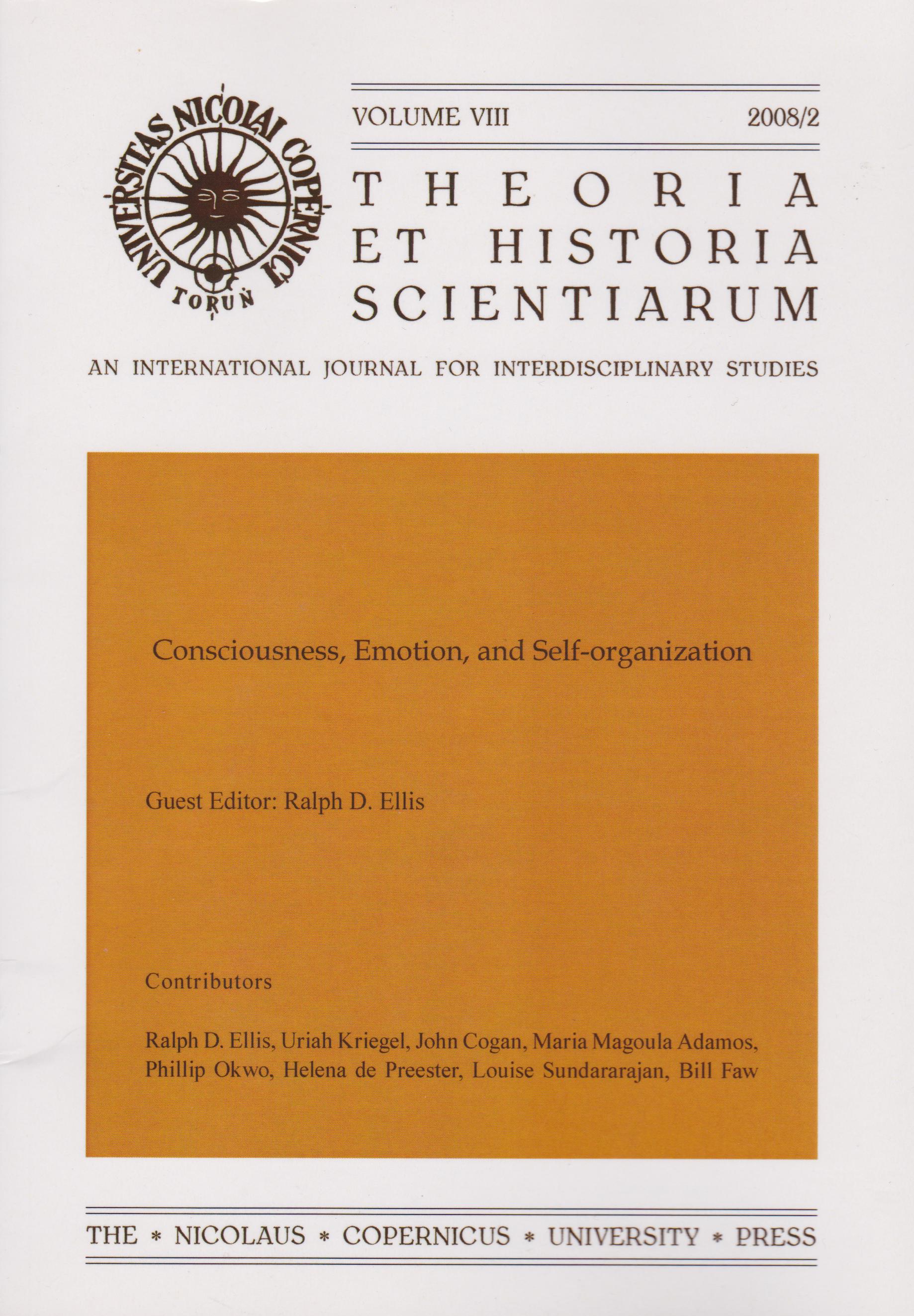Non-consummatory Motivations: Extropy and “Life wish” in the Self-organization of Emotion
DOI:
https://doi.org/10.12775/ths.2008.014Keywords
emotion, motivation, reductionism, self-organization, dynamical systemsAbstract
On the “enactive” view of the affective life, emotions are barometers of success for organismically initiated efferent action schemas, and not merely afferent (interoceptive)reactions. This active-passive distinction is grounded in self-organizational theory. One implication of this dynamical enaction approach is that complex systems seek to maintain the complexity of their patterns of activity, and avoid lapsing into lower-energy and less complex patterns. Thus non-consummatory motivations such as exploration, play and nurturance can be seen as resulting from what I call an “extropic” dimension of complex dynamical organisms, and are not as easily explainable as are consummatory motives purely in terms of energy-efficient homeostasis. In consummatory satiation, chemical needs such as in hunger or thirst are the driving forces, pushing toward consumption of chemical resources needed for homeostasis. But homeostasis can be achieved at both higher and lower energy levels. “Extropy” is the tendency of some complex self-organizing systems to prefer higher- over lower-energy basins of attraction. The latter, however, can be convenient paths to energyefficient homeostasis within component subsystems, which is the driving force of consummatory needs. Extropic motives differ from the purely homeostatic ones — i.e., those which seek a maximally energy-efficient homeostasis — in that the extropic ones resist the complacence that would follow from consummatory satiation if energy efficient chemical balance were the only ultimate aim. Non- consummatory motives, while maintaining homeostasis, can fundamentally conflict with consummatory ones by pushing toward higherenergy attractors in the interest of maintaining complex structural patterns for the overall system. Thus it is argued that extropy is an independent demand alongside homeostasis. This analysis yields an analysis of a number of relatively independent emotional-motivational categories around three main types of needs: Extropic, homeostatic, and boundary-protection needs, conceptualized around the basic dimensions of complex dynamical systems.
Downloads
Published
How to Cite
Issue
Section
Stats
Number of views and downloads: 487
Number of citations: 0



